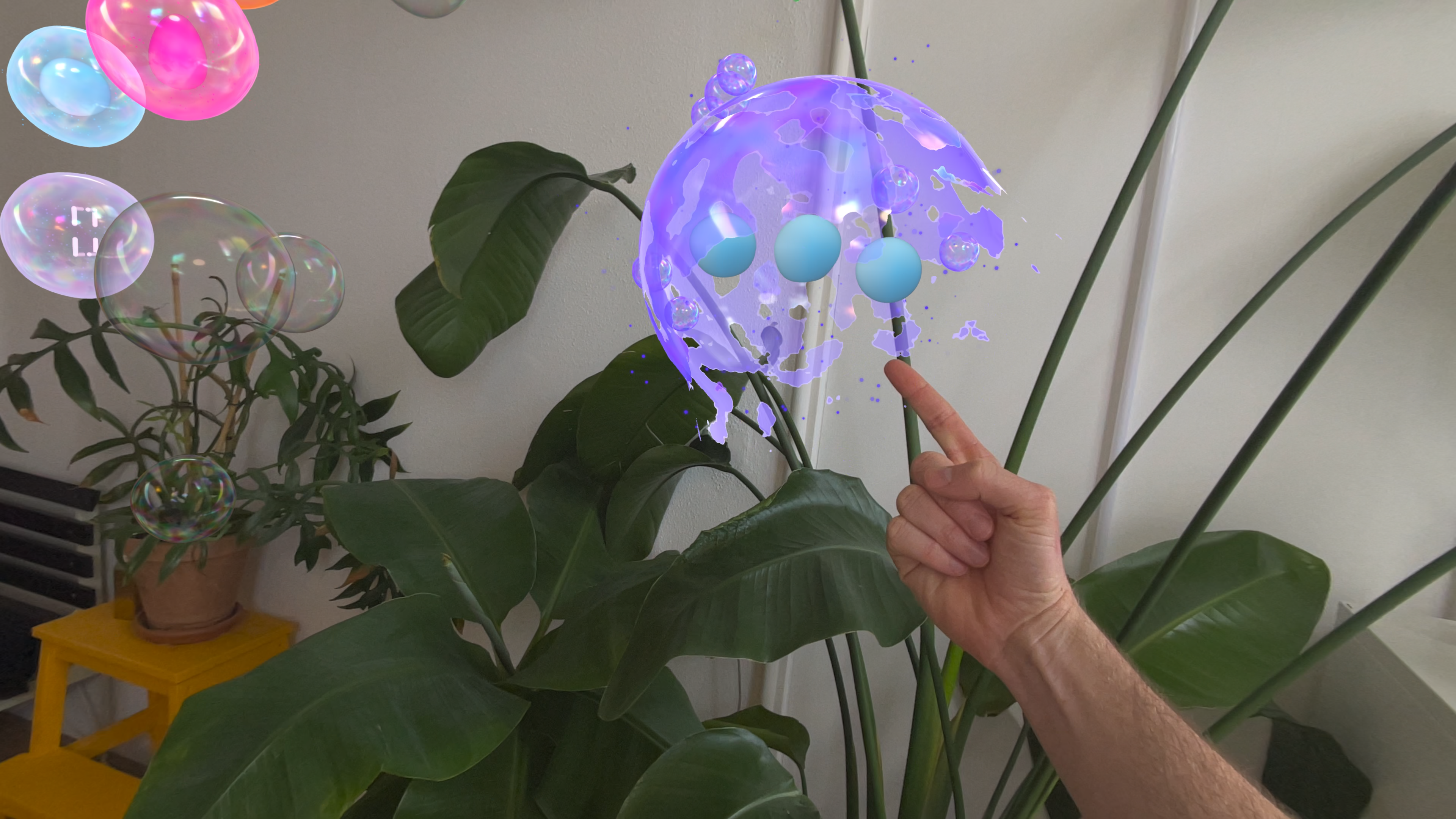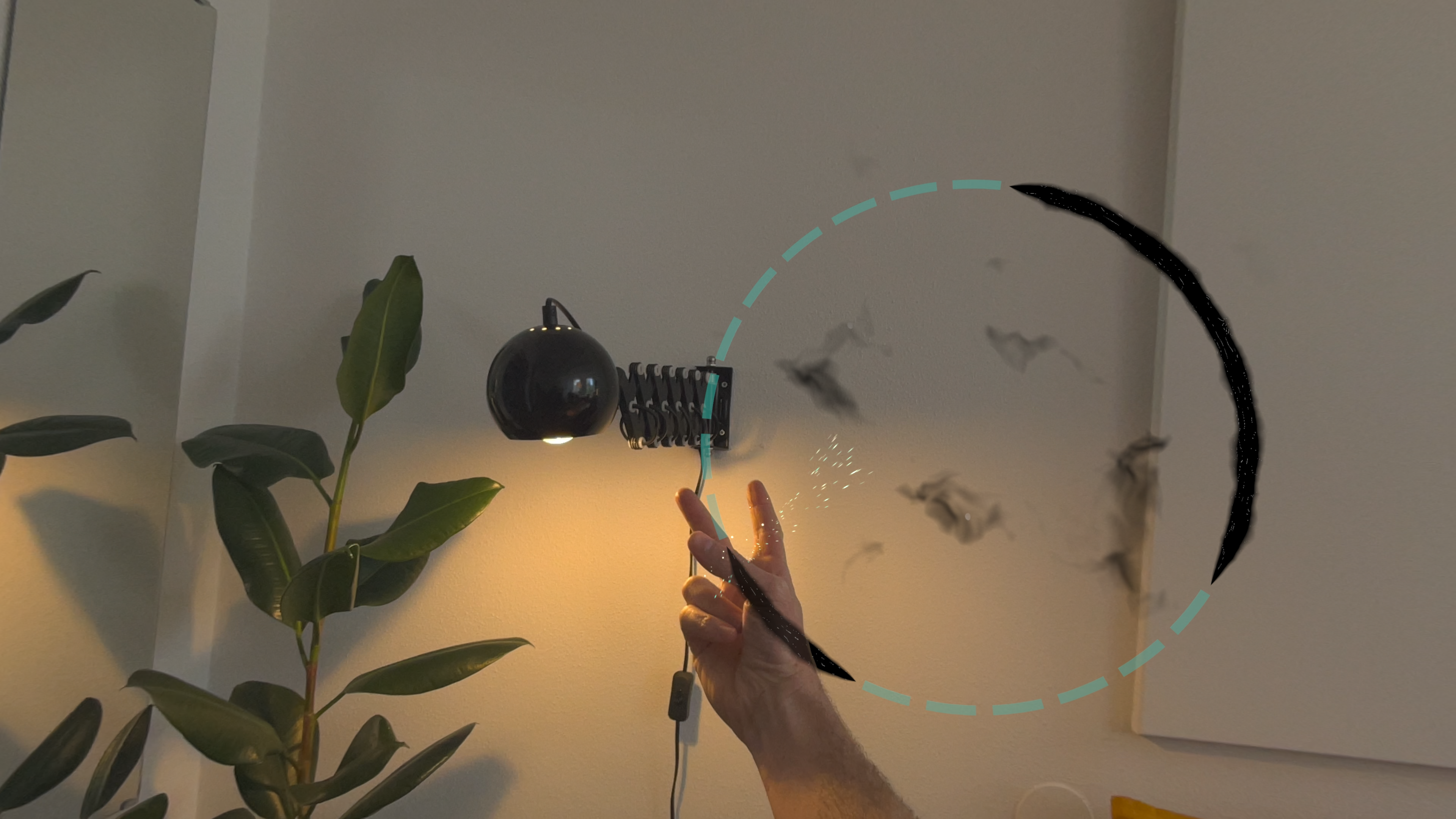Transforming the cult game Blackbox from iOS to VisionOS
Ryan from Blackbox shares his views on app analytics and talks about Blackbox for Vision Pro.

Blackbox is a hard to describe, colorful, cultish, outside-the-box puzzle game for iPhone that won an Apple Design Award in 2017. The game launched at a time when hyper-casual, “one touch” games were all the rage, but Blackbox didn’t rely on taps or swipes at all and is largely played without touching the screen, instead relying on sensors, celestial events, and settings. While the iOS version is still under active development, indie developer Ryan is now also building Blackbox for Apple Vision Pro, which itself won an Apple Design Award in 2024.
Re-Inventing Blackbox for the Apple Vision Pro
Blackbox for Apple Vision Pro is really an evolution of the iOS version. The original game pushed players to think outside the box and outside the confines of the devices in their hands to search for answers in the real-world. With no metaphorical 4th wall left to break through on Apple Vision Pro, Blackbox simply exists around you as a collection of bubbles you can pop to release the puzzles within. From there, players can play and experiment to see what makes a certain puzzle react, work out its secrets, solve it, and capture its essence (its glowing core that serves as a sort of trophy).
We built Blackbox for everyone who’s curious about the world, those who like to figure out the inner workings of things, the patient, the playful, and even those people who sometimes claim they “don’t really play games”.

Over the last 8 years, Blackbox for iOS has been played by over 12 million curious people, with a special few thousand having gone the extra mile (or thousands) to complete all 81 current challenges. While obviously numbers on VisionOS are smaller, we’re proud knowing just how many Apple Vision Pro owners play Blackbox and that we so often get to be many people’s first and favorite experience.

Making data informed decisions
So many analytics products are over-complex and unopinionated, with dashboards designed for an experienced data scientist to wrangle. As a busy indie dev that’s simply not within my capabilities nor what I have time for. I want to answer basic questions:
- Where do players drop-off?
- How many players use iPads?
- How many more people complete challenges after using hints?
TelemetryDeck helps me answer these questions in a privacy-friendly way I can trust with confidence.
The core metric that’s improved with the usage data from TelemetryDeck is the onboarding funnel. Spotting that a huge percentage of players drop off at a section I thought was pretty straightforward is helping me make tweaks to ensure more players actually grasp and enjoy the rest of the game!
Finding the path through the jungle of app developer tools
Truth be told, I am still using Firebase Analytics on iOS but hope to move off it as TelemetryDeck improves and expands (I trust I’ve opted-out any sketchy privacy stuff Google Analytics could be “mishandling” but can’t ever know for sure). On VisionOS, I wanted to start fresh, so we don’t use it at all.
Mostly, I am sick and tired of how hard it is to answer basic questions using their dashboard. I miss Fabric immensely and want that level of basic health metrics in a glanceable dashboard.
I don’t care what gender my players are or their ages, I just want to know if they’re making good progress and enjoying what we’ve built.
With TelemetryDeck, I can do my basic health checks like ensuring the number of solves for a certain challenge doesn’t drop significantly after an update, checking if our onboarding funnel drop-offs are improving, etc; while also testing new hypothesis like “does this feature really get used as much as I think it does?”

Although TelemetryDeck is under active development, I have noticed a few things
I always worry with analytics products that I’ll accidentally make a decision I regret and make a mess of my dashboard and data down the line by choosing snake_case over camelCase for event names, using confusing parameter names, etc. so I’d always appreciate more guidance and very explicit examples. I want to understand what choices to make early on to most easily and best use my data later. When should I use additional Parameters versus a new event? Is there a specific call to use for purchase events? (yes!)
I find the UI for specifying events to make things like funnels (the and/or logic blocks) cumbersome to use, but eventually figured it out and restructured my events to work with the interface better. It’s a very versatile tool which is great but not very beginner-friendly, and I worry people don’t grasp its full potential (myself included!).
Editor’s note: Thanks so much – we’re actively working on improving these parts with better documentation and our upcoming navigation analytics <3
To whom would you recommend TelemetryDeck?
It’s crazy to me how many of my indie friends don’t use analytics. I get the strong convictions and worries many of them have about privacy, which is great, but fearing analytics generally isn’t the solution either! It’s refreshing to be able to so wholeheartedly recommend TelemetryDeck to them knowing they can make better decisions and still keep that privacy scorecard sparkling clean.
